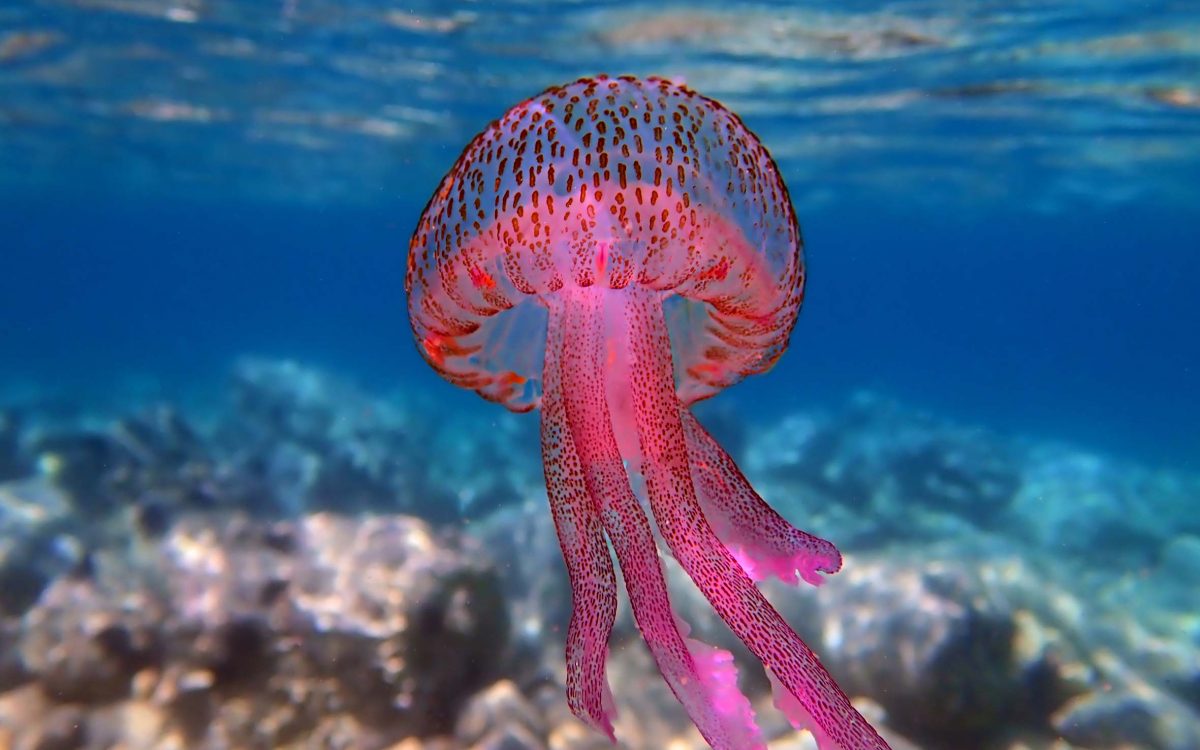As reports began coming in a few weeks ago that “purple jellyfish,” Pelagia noctiluca, were being spotted on beaches of Greek islands from the Ionian to the Saronic gulf, experts reassured bathers; while these deceivingly pretty creatures do carry a pretty painful sting in their tentacles, they are not particularly dangerous, and can be easily treated. The purple jellyfish population in the Aegean usually explodes about every 10-12 years, and last for about two years. This is the second year of this cycle.
In addition, bathers are now flagging the presence of one more type of jellyfish, a larger sized cousin, the “barrel jellyfish” Rhizostoma pulmo. While these jellyfish are actually more common in the Mediterranean, with a population outbreak happening every year in June, they usually stay in deep sea, except when winds and currents bring them ashore. As opposed to their fun-sized purple cousins, the bodies of these jellies can grow up to 90 centimeters in diameter. They’re either white or blue, with a purple ring around the edge of their bodies, which make them slightly easier to spot. Like the purple jellyfish, they are venomous, but stings are not fatal.
If you get stung
Whether you find them beautiful or just… slimy, it’s good to be aware of the presence of jellyfish, and prepare accordingly, so ask at your destination if there have been sightings.
Swimmers heading to a beach where jellyfish have been spotted should make sure they go equipped with a sting salve (you acquire this from a local pharmacy) or baking soda. To treat a sting with the latter, mix soda with equal parts water and apply.
If you get stung, before applying treatment, be careful to clean the area off with water and not to touch your face.
With information from kathimerini.com.












